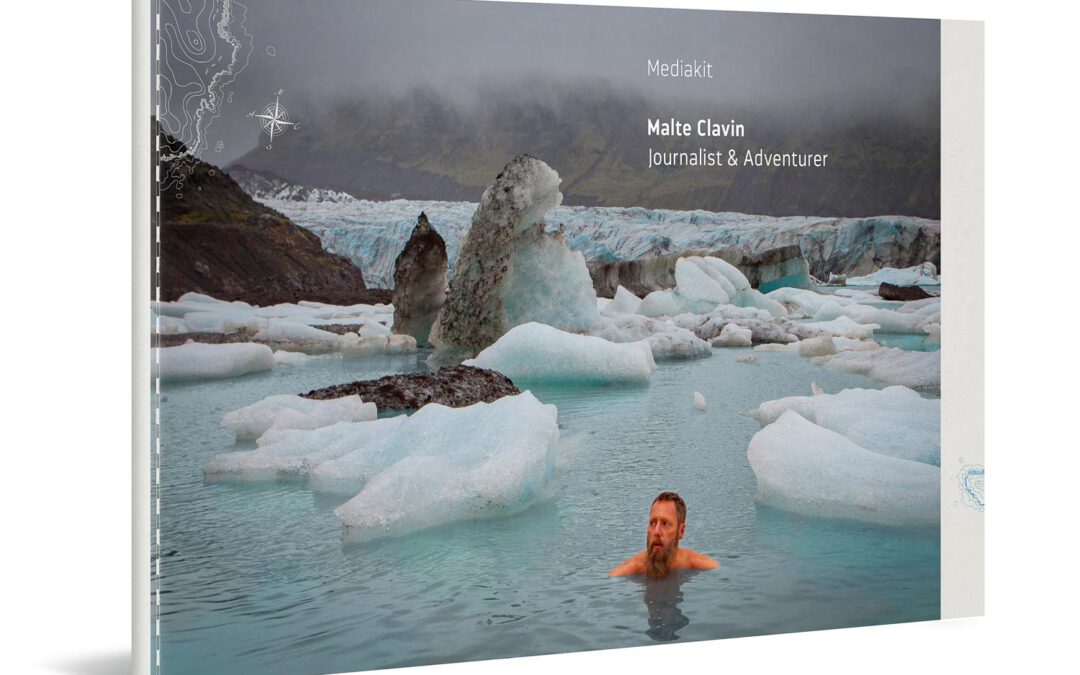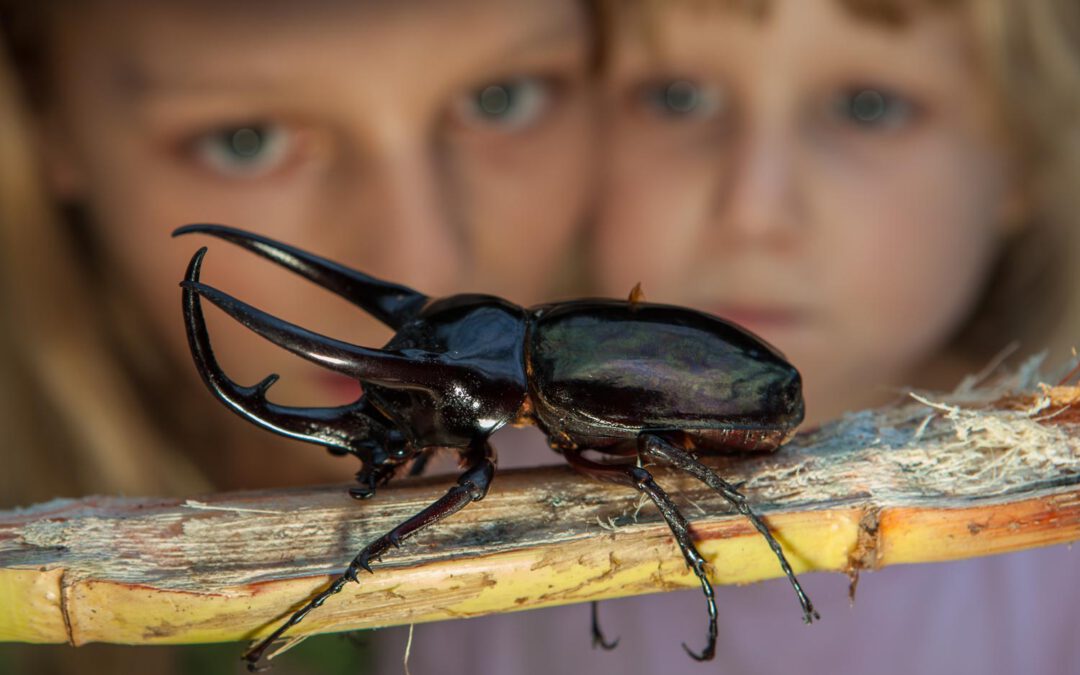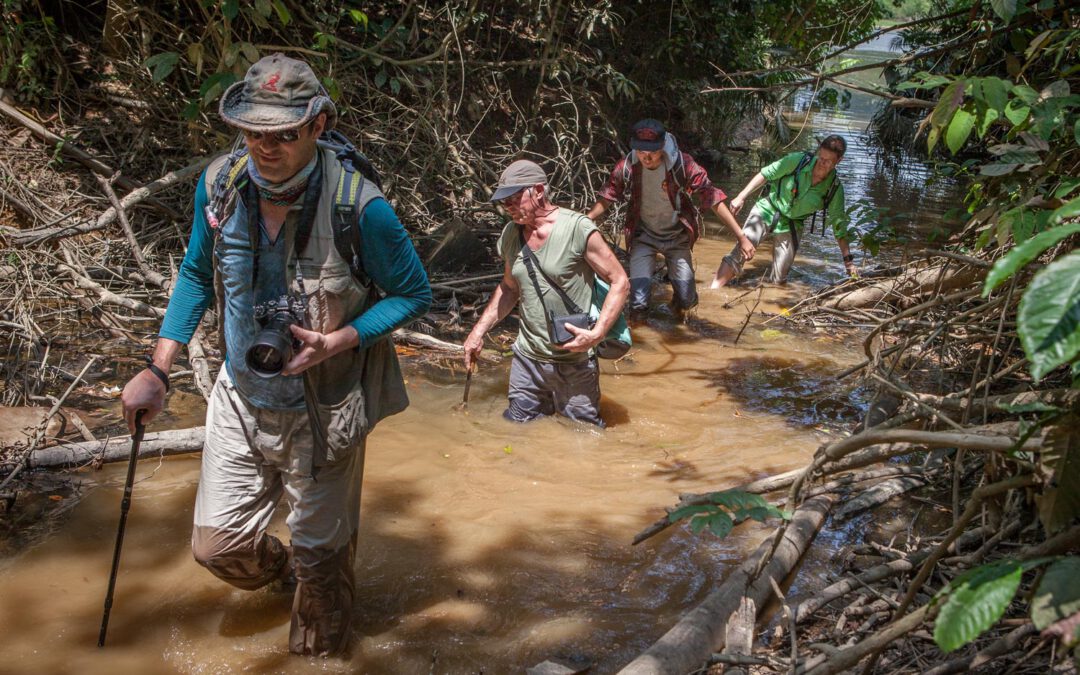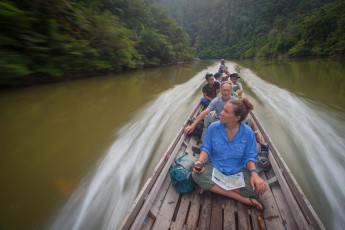
We chug upstream on the Subayang River to the starting point of our jungle walk. There are no roads here, all people and goods are transported on the river.
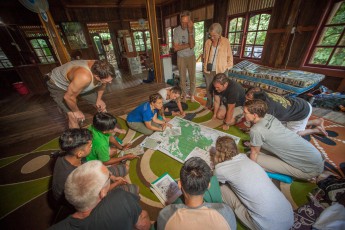
Expedition leader (blue T-shirt) Ida briefing the Biosphere volunteer team for the day.
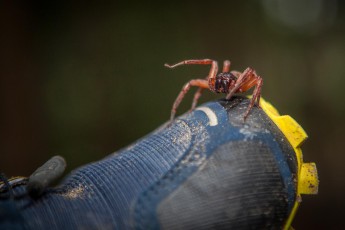
The morning of the first jungle excursion. Before I put on my shoes, I knock them out to be on the safe side. Biting insects might have made themselves at home in them. This spider runs over my fingers and takes up a fighting stance.
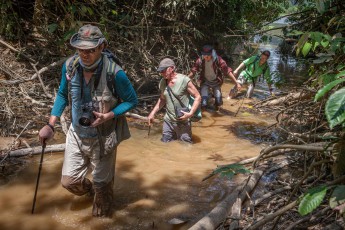
Subayang River: Arriving at the starting point of our jungle excursion, we wade through streams and ditches into the jungle, sometimes at belly button depth.
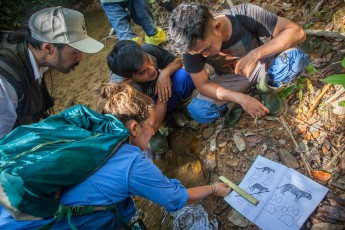
Ida measures the trail of a Sunda clouded leopard. A beautiful animal, similar to a leopard, but the skin patterns with cloudy spots. And much too rare: since 2008 he sticks on the red list of endangered species.

During a refreshing bath in the river, an animal lurks buried in the bottom. And snaps. Soft-shelled turtles have sharp beaks and are carnivores. It looks worse than it is: with a bandage I can continue walking.
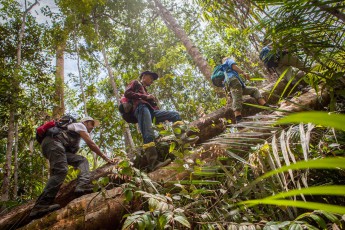
During the jungle crossings, fallen trees serve as natural bridges.
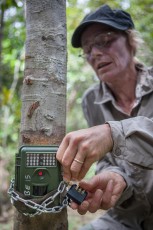
Katja fastens a camera trap and secures it with a lock against pilferers.
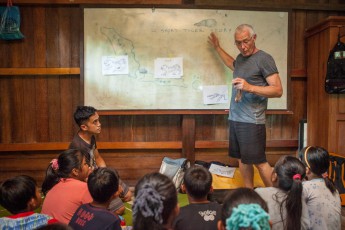
At WWF headquarters, Peter teaches schoolchildren about the plight of the Sumatran tiger. The neighbouring islands of Java and Bali once had their own tiger subspecies. The Java tiger has been considered extinct since 2003, the Bali tiger since the early 1940s.
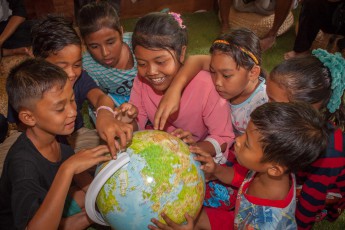
The Biosphere Expedition Program also includes a visit of school children to the WWF Research Station. Here the children must find a country on the globe as fast as possible.
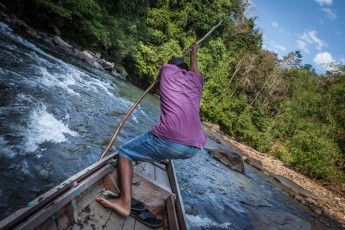
A WWF boat takes two teachers and me to the last village close to the source of the river. The boat gets stuck constantly and this man heaves us over the flat spots on an on again. What a grind work.
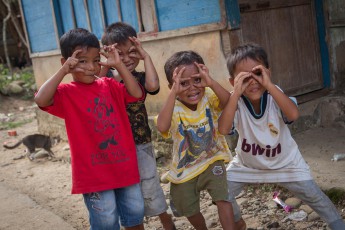
These village kids love to imitate me while taking pictures.
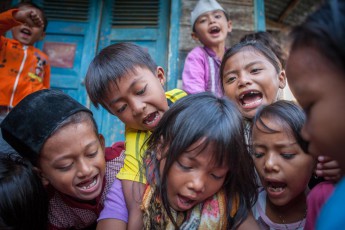
In the middle of the village: No cell phone, no Playstation, nothing like that: Only lively, friendly, sometimes wonderfully dreamy play.
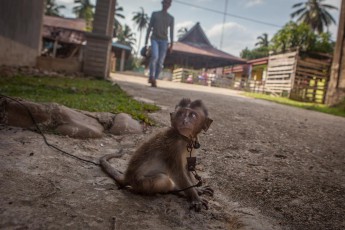
This little long-tail macake is the pet toy of a boy. His mother bought him from a peasant who, as he says, found him in a field.
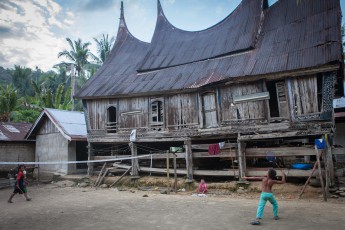
In this remote village just before the Subayang River spring stands a so-called ancestral house, built in the 1920s. These uninhabited, dilapidated houses won't be demolished. The villagers say it is the home of the spirits of their forefathers.
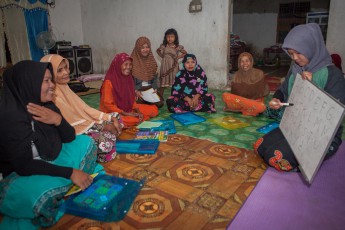
It's pitch black as the first women enter the room. They directly come from their Friday prayers in the mosque. Now WWF teacher Antika teaches reading and writing. For many women, this is the first school they visit in their lifetime. Each woman in the circle reads the ABC off the whiteboard. Their papers get filled with self-written letters, kids help their mothers and grandmothers. And there is a lot of laughter. At the end of the lesson, a hunter-tiger story is read, in which the tiger turns out to be a hero. This is how you erase images of arc enemies.
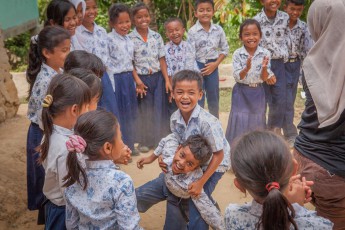
This natural joy is so contagious - I can barely photograph while grinning. Tears come to my eyes.
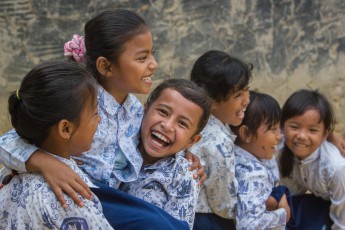
This natural joy is so contagious - I can barely photograph while grinning. Tears come to my eyes.
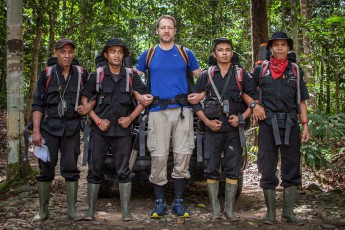
WWF allows me to accompany a Tiger Protection patrol through the jungle - together with the Rangers Siid, Dede Apriadi, Atan Marzuni and Masrizal.
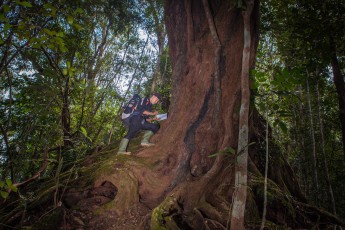
Several Tiger Protection Unit teams, each consisting of four rangers, are constantly combing the huge area. Their constant presence discourages poachers, and they collect data about the habitat of the tigers and destroy illegal traps. In 2015 alone, the Rangers eliminated more than 100 wire loops.
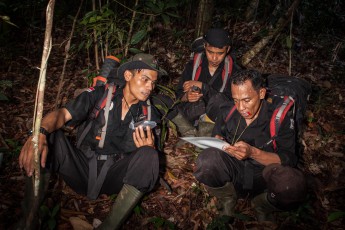
We discover tapir tracks, bear scratches and many illegally logged trees. Everything is meticulously documented on data sheets. "What are the odds to spot tiger?" I want to know. The rangers cheerfully shake their heads. Atan replies: “The TPU was founded in 2004. In thirteen years altogether only four tigers were spotted."
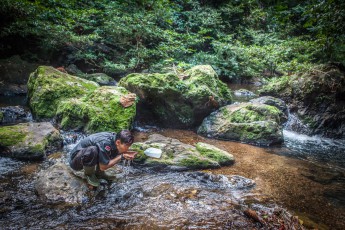
Late in the afternoon we reach a river. Atan and Masrizal go ahead to inspect the campsite. After a few minutes they are back. Excited words on Bahasa, the main language of Indonesia, go back and forth. Nuri turns to me: "We can't camp up there. There's a 7 meter long phython in the water."
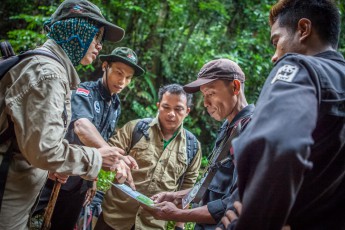
Briefing before the patrol enters the jungle for a couple of days.
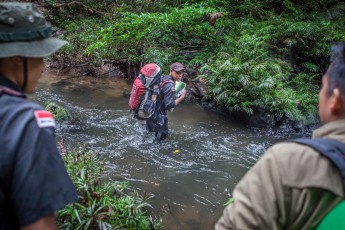
Late in the afternoon we reach a large river. "There's a waterfall a few minutes upriver. There we will pitch our tents." sayy Siid. Two rangers go ahead to inspect the campsite and return only after a few minutes. Excited words in Bahasa, Indonesia's main language, go back and forth. Then Siid turns to me: "We can't camp there. "There's a Python in the water - seven meters long."
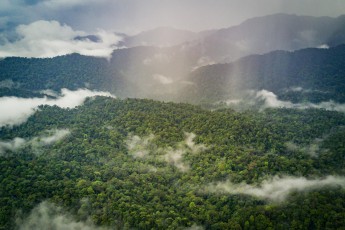
I'm using a short rain break to launch my drone. Very carefully I steer it past the mighty tree tops. Then my mobile phone screen shows the drone's camera view: endless forests, dabbed with clouds, streaked with rain curtains. Unchanged for millenia.
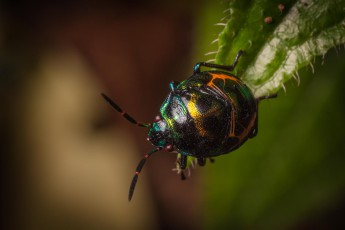
An unknown bug.
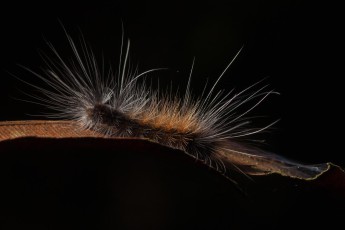
An unknown caterpillar.
